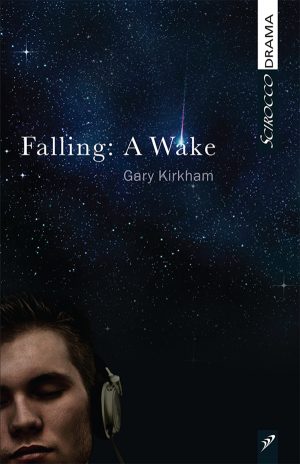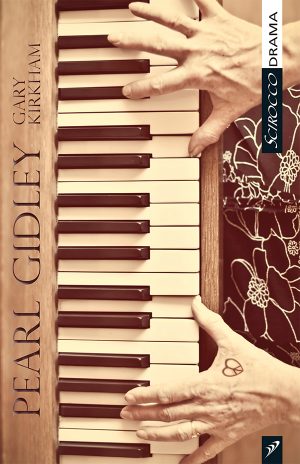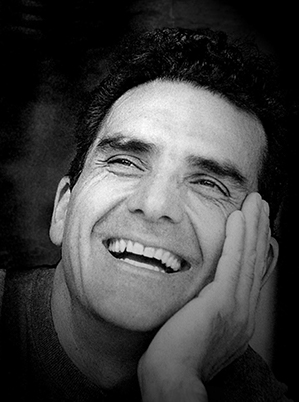Posted March 21, 2022
The Interview – Gary Kirkham
Gary Kirkham
Gary Kirkham is a playwright, actor and filmmaker. His plays include Falling: A Wake, Pearl Gidley, Queen Milli of Galt, Rage Against Violence (with Dwight Strorring) and Pocket Rocket (with Lea Daniel) . Gary is an artistic associate with the MT Space in Waterloo, Ontario, and has worked in collaboration with the company on several shows including The Last 15 Seconds, Seasons of Immigration, Body 13, and AMAL. Kirkham’s plays have been produced by more than fifty theatres across Canada and internationally, and have been translated into French, Italian and Arabic.
A recent project of yours, Rage Against Violence, deals with the subject of family violence, and incorporates the verbatim accounts of survivors. Can you tell us more about this project, and about the involvement of international artists in the process?
Dwight Storring and I were working on a verbatim play about domestic abuse commissioned by The Women’s Crisis Services of Waterloo Region. We had several survivors as well as a social worker, a nurse, and a cop who work with domestic abuse victims. I knew the family of Denise Bordeau, who was one of the MMIWG (Missing and Murdered Indigenous Women and Girls). The murder trial was happening while we were working on the script and the family asked me to include Denise’s story in our play. We then turned twelve hours of interviews into a one-hour play. The play was supposed to be performed just the one time, but we got requests from other groups. So we reached out to participants and told them we would make the play royalty-free if done as a fundraiser for a women’s shelter or an awareness program.
That’s when my friend Gisel from Mexico called, wanting to translate a Spanish version of the play. We started working on the translation, but we soon realized she had her own story to tell. When Gisel was 14, her best friend’s mother disappeared. Every weekend Gisel and her friend would go to hospitals and the morgue with a photograph of the mother. Ten years later and her friend’s mother has still not been found. Her story was very similar to Denise Bordeau’s story.
I realized we could take the twenty minutes of the play that was Denise Bordeau’s story and merge it with Gisel’s story. Another colleague from Turkey also wanted to be involved, so now we are working on a play with three stories in Spanish, Turkish, and English.
You often work with MT Space, which has a mandate to produce theatre that centralizes marginalized voices, addresses social issues, and promotes intercultural understanding. Tell us a little about your work with MT Space’s Newcomer Theatre.
The MT Space was commissioned by the local YMCA to create a theatre program for local newcomer youth. The MT Space was defined by the Globe and Mail as “an avant-garde theatre company”. So you might think that an avant-garde theatre company might be an odd fit for teaching theatre to newcomer youth. But it turned out our non-traditional theatre form is a perfect fit.
We had youths from sixteen different countries speaking twelve different languages. Most of them had been in Canada for only a few months.
The last thing I wanted to do was impose a western idea of what theatre was, so we realized our “avant-garde” theatre style would be a great place to start. I told them, “I’ve been doing theatre for thirty years and I no longer have a definition for what theatre is, so we are going to define what theatre is together.” When we start, we don’t have a script or even an idea of what the play will be. But they have stories and together we figure out what theatre is.
Many of your projects involve collaboration across cultures and across disciplines. Can you tell us about one of your favourite collaborations?
I was commissioned to create an art exhibit with deaf/blind students at the Ross MacDonald School for the Blind. I brought in my artist friends, Gareth Lichty and Megan. The idea was that we would work as artist assistants: we take their ideas and scale them up to work in the gallery.
We went to the school to meet the students, most of whom were under ten years old. The oldest student was Cerenna, who was in Grade 10. She was born with perfect sight and hearing but was going deaf and blind. She now had about 10% left. She was smart, funny and opinionated. Gareth and I talked and thought Cerenna could curate the show. The art world has several definitions for what a curator might be, so we didn’t want to define it for her. We asked her to curate the show, and when we asked if she knew what the word meant she said yes.
We came back three weeks later and started working with the students. At the end of the day we met with Cerenna, and she said “Okay I’ve created the show. It’s seven rooms and it’s about my loss of sight and hearing.” When we said “curate,” she heard “create.”
She told us: “The first room is called ‘Understanding’; it’s covered in blackboards and I’ll write words over words over words so you can barely read anything, and I’ve created a soundscape of my teachers all talking over each other with the squeal of the feedback of my hearing aid. And the second room is called ‘White Noise’; the walls are covered in Braille and the soundscape is the tone of my tinnitus and the white noise of the fans in my classroom.” She described five more rooms, each better than the next.
We spent the next three weeks building the design she described. Her design was the most ambitious installation the gallery has ever had. The project was covered by the CBC and Cerenna gave a motivational talk about the project to 15,000 youths at the Air Canada Centre.
Here is a link to a walkthrough of the installation we did with Cerenna: https://youtu.be/TILDP4cjhX0
Scirocco Drama published your play Falling: Awake, about a couple whose lives are changed when the body of a young man, still strapped into his airplane seat, falls from the sky into their farmyard. How did you come to write it?
Growing up, one of my best friends was Paul Freeman. We did everything together; we even both ended up becoming actors. He was working in London and was flying home for Christmas when the Pan Am jet he was on exploded over Lockerbie, Scotland. All 259 passengers and 11 villagers on the ground were killed. They found Paul’s body in a farmer’s field several miles from the crash site. I had this image of Paul’s body in the middle of nowhere alone on a windy night. That image would keep me up at night. Then one night, as that image was in my head, I saw a lamp…. I saw this older woman come up to him slowly and say… “I think we should stay with him.” I cried. And then I knew this was a play. The next image was of her husband bringing her a stuffed chair so they can wait comfortably with the boy until the authorities come. I laughed. And then I knew it was going to be a comedy. Well, maybe a drama with a lot of humour.
Gary, most of Canada’s theatre artists are centred in large cities like Vancouver, Toronto, or Montreal. Yet so much interesting and innovative work is coming from the Kitchener-Waterloo area, where you live. Tell us about the KW theatre scene and why you like being based there.
There is an inferiority complex you get from being in a small city and KW was a poster child for that. If you wanted to be an artist, you had to go to the “Big City.” Then about twenty years ago a bunch of musicians, artists, and theatre creators decided to stay. Soon others joined them, like Majdi Bou Matar from Lebanon and Isabel Cisterna Pino from Chile, and now it’s a vibrant artistic scene. I love working in this town because I can collaborate with musicians and sculptors and dancers and opera singers and artists from around the world. That messy blur of multiple artforms from multiple cultures is such a rich place to create in. I think this community allowed me to create a very accessible play like Pearl Gidley and in the same year co-create a genre-blurring play like The Last 15 Seconds.
There’s a review quote about your play Pearl Gidley that is such high praise: “Pearl Gidley is a modest play. But it is modest in the way Carol Shields’ novels are modest, Alice Munro’s and Ernest Hemingway’s short stories are modest, or Anton Chekhov’s plays are modest.” Do you have any theories about why this play about two elderly small-town sisters impacts audiences so strongly?
I blushed when I read that quote. My next thought was “I hope my Grade 10 teacher who gave me a “D” in English reads that quote.”
I think the main reason audiences respond to my characters is because I genuinely love my characters. I loved Pearl Gidley the moment I heard her story when I was playwright-in-residence at the Blyth Festival. In 1910, Pearl was a concert pianist engaged to a composer. Something happened, and the wedding was called off. She moved in with her sister in Blyth and didn’t play the piano again until 1966.
I really wanted the audience to love Pearl and her sister as much as I did.
Another reason was the input of my director/dramaturg, Miles Potter. I had seen Miles work over the years and loved what he brought out of actors. We had a great relationship. Three weeks before rehearsals began, Miles told me, “I want a new draft from a blank page. No cut-and-pasting. The exact same play, but from memory from page one.” I’m thinking, “I spent over a year getting the play to where it is now. There is no way I can do that again in three weeks.” I started with the first page and by the end of the day I knew he was right. I was writing the exact same scenes but tighter, smoother. And then by the third day I was totally reimaging scenes because I knew exactly where they were going and what they had to do. There was a depth and consistency to the characters that you can’t get from cutting and pasting. The end result is a play that was in my heart was on the page, and then on the stage.
What is the best advice you ever received about playwriting?
I was taking a clown workshop with Dean Gilmore. He said: “Stay in the shit,” meaning that any time your character is in distress, keep them there. Great advice for theatre, terrible advice for life.
-
 Falling: A Wake Paperback$15.95
Falling: A Wake Paperback$15.95 -
 Pearl Gidley Paperback$14.95
Pearl Gidley Paperback$14.95

